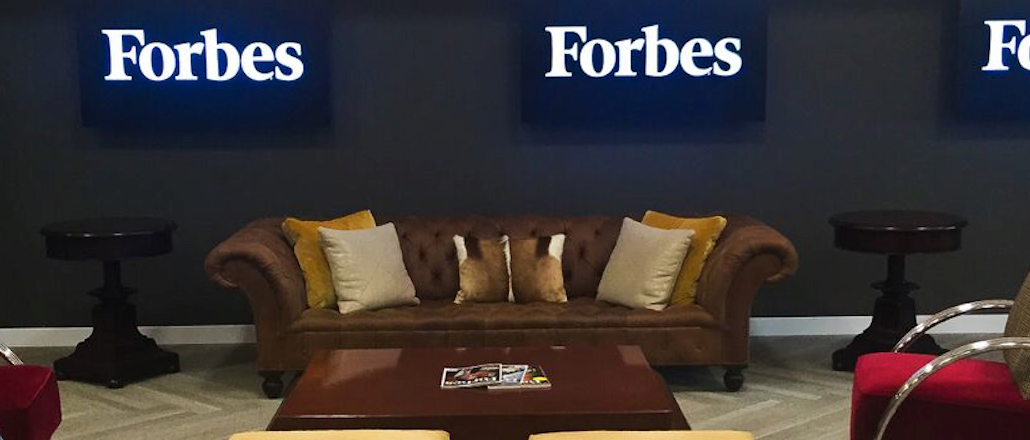Register by Jan 13 to save on passes and connect with marketers from Uber, Bose and more

Forbes’ native ad program BrandVoice is well-established in the U.S., though it’s got a way to go before it can boast the same scale internationally.
That’s the mission of the publisher’s London-based commercial team, led by EMEA director Paul Mikhailoff, who stepped into the newly created role after former managing director of international Charles Yardley left for City AM four months ago. Seven clients from Europe are now signed up for BrandVoice, among them Philips, and another two are on the verge of being signed, though they didn’t want to be named. Digital ad revenue has grown 20 percent year-on-year, while 80 percent of the publisher’s global revenue is from digital ad deals — both native and regular digital.
The publisher has scaled its U.S. native ad platform through a mix of methods, including letting ad clients run content featured on rival sites. BrandVoice now has 115 brand partners, all of which can publish branded content directly through the Forbes platform. But to expand its partners internationally Mikhailoff recognizes it must share more of its data with clients.
“The great thing about BrandVoice is that it has scale. And,increasingly, we’re hearing from marketers that they’re interested in ensuring the right people are being exposed to our BrandVoice content,” said Mikhailoff. “That’s why we have launched Brand Voice Premium – integrating influencer marketing and overlaying client side first-party data to enhance the targeting of native promotion.”
Agencies agree that Forbes needs to sweat its audience data harder — for both regular and branded content campaigns that run via BrandVoice. Erfan Djazmi, head of planning and mobile at Essence, said Forbes has decent international scale (4.5 million monthly U.K. visitors compared to 46 million in the U.S., according to comScore). But he added, “Where we’re a bit frustrated is how they use that scale. They don’t use their audience data in clever-enough ways to target that audience. Important data signals like how mobile location data can be used to tie to an audience’s passion points for example are the kinds of things we look for.”
Forbes’ branded content model, which lets advertisers pay to publish directly to the platform, has done well in the U.S. but is not necessarily the perfect formula for overseas, some agencies have said. “Sometimes with these kinds of products — when it’s clear the brand is speaking — it feels more like advertorial. We’re trying to get away from that. In some cases, that can work, but we favor native products when it’s clear the editorial and marketing functions have worked more closely to create a more meaningful experience for the client,” said Djazmi.
Forbes is freeing up more data-driven, quality content opportunities on BrandVoice, at least for Premium package partners, which pay a minimum $600,000 for a six-month period. This gives them access to key “influencers” defined as journalists, bloggers or any other content creator publishing on a specific topic (like cloud computing, for example) on pre-determined categories, courtesy of Forbes’ partnership with social media analytics firm Traackr.
Traackr mines 20,000 social platforms and websites to identify these influencers, who are themselves prolific content producers in their areas of expertise. Forbes will then approach them to see if they would publish on the client’s BrandVoice content series. Forbes has one major brand signed up, a deal being led from the U.S. office.
David Goodall, managing director of Havas Media International, said that expanding the influencer program to a European audience is a good move, though it will be a tough sell due to the publisher’s reliance on U.S.-based clients.
“It’s interesting and a smart package, well-targeted at advertisers, but in all honesty, we can already do this at scale with other tools and technology, so they’ll find it tough outside the U.S.,” said Goodall. “The interesting piece will be if they can somehow get deeper understanding of audience behavior.”
More in Media

Future starts to sharpen its AI search visibility playbook
Future is boosting AI search citations and mentions with a tool called Future Optic, and offering the product to branded content clients.

Digiday’s extensive guide to what’s in and out for creators in 2026
With AI-generated content flooding social media platforms, embracing the messiness and imperfection of being human will help creators stand out in the spreading sea of slapdash slop.

Media Briefing: Here’s what media execs are prioritizing in 2026
Media executives enter 2026 weathered by disruption, but refocused on AI revenue, brand strength and video and creator opportunities.





